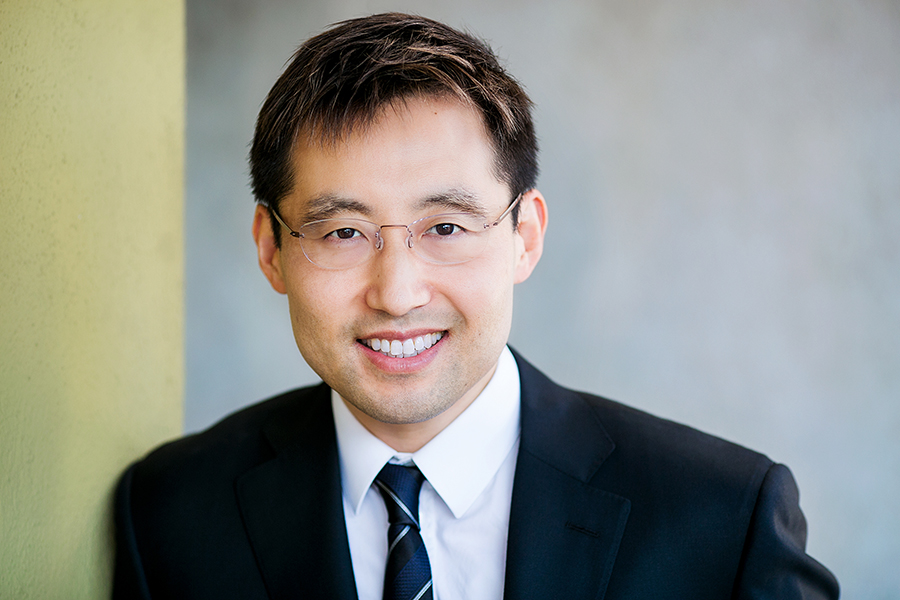Awake surgery is an advanced surgical method in which patients receive a local anesthetic rather than traditional, general anesthesia. Dr. Kenneth Kim, a board-certified plastic surgeon, brought this technique to his Los Angeles/Beverly Hills clinic from South Korea.
For patients undergoing breast augmentation, Dr. Kim asserts that awake surgery is significantly safer. He also sees patients experiencing better aesthetic outcomes, less post-operative pain, and faster recoveries.
Awake surgery and local anesthesia during breast augmentation lead to fewer complications and better outcomes
“Plastic surgeons can achieve better results after a breast augmentation when patients are awake during the procedure,” Dr. Kim attests.
Much of the reasoning behind this has to do with blood pressure because when patients are placed under general anesthesia, their blood pressure inevitably drops. This is one reason why surgeons must ascertain that there is no bleeding after concluding the procedure.
Unfortunately, when patients wake up, their blood pressure returns to normal. As a result, their blood vessels often leak. At times, post-operative hematomas necessitate further surgery to resolve the bleeding, but sometimes, the bleeding goes unnoticed until hours or days later.
Some patients discover bleeding as they develop bruising, but post-surgical bleeding also triggers the formation of scar tissue. This occurs when white blood cells are activated and cause inflammation.
“When inflammation occurs, you get internal scar formation,” says Dr. Kim, “but an optimal breast augmentation involves no internal scarring. We are familiar with burns, which are simply scar tissue formations on the outside of the body. Scar tissue makes things hard inside the body, just like burns make skin tough on the surface. “
According to the National Center for Biotechnology Information, capsular contracture — or hardening of the breast — is the most common complication after breast augmentation, occurring after 10.6% of procedures. In this situation, one part of the breast typically becomes harder than the other.
“Awake surgery greatly reduces your chance of inflammation and bruising,” Dr. Kim explains. “If you undergo a breast augmentation while you are awake, then your blood pressure does not change during or after surgery. When all the vessels are sealed, they remain that way.”
Awake surgery and local anesthesia allow for ultra-precise targeting
When plastic surgeons use local anesthesia during awake surgery to perform breast augmentations, they are capable of ultra-precise targeting because they can focus solely on the implant area and minimize disturbance to surrounding tissues.
“When I perform a breast augmentation, my patient can move her arm however she wants to afterward without any discomfort because of the level of attention we can achieve,” remarks Dr. Kim. “We are talking about precision on a whole new level — it’s bioengineering and biomechanics on the cellular level. Awake surgery takes longer because we are far more meticulous.”
The constraints of awake surgery require plastic surgeons to operate within a much more narrow space. Dr. Kim likens the fatiguing process to driving an extremely narrow road for hours.
“When doctors rely on general anesthesia, they can go anywhere,” he says. “It’s like barreling down an eight-lane highway with no walls and no other vehicles. Operating under local anesthesia requires me to be highly precise, which is more like driving a winding mountain road. I cannot speed or cut corners.”
While this extreme precision takes longer, it leads to less trauma to surrounding tissue. This, in turn, results in minimal pain and a more rapid recovery process for the patient.
Local anesthesia during breast augmentation means no pain and a quicker recovery
When plastic surgeons employ local anesthesia to numb nerves at the surgical site, it prevents those nerves from activating and perceiving pain. By contrast, under general anesthesia, the body still experiences pain. However, because the brain is put into a comatose-like state, it cannot process this pain until after the surgery.
Treating post-operative pain is a massive issue in the medical community. For one, the over-prescription of legal pain medication spawned a decades-long opioid epidemic, which still costs the US over $1.5 trillion each year and has resulted in over 1 million fatalities. This is not surprising when the Centers for Disease Control finds that one out of every four patients prescribed long-term opioid medications becomes addicted.
“People used to think that the body didn’t feel pain under general anesthesia,” says Dr. Kim, “but we now know that the body releases a flood of stress hormones during surgery. Your blood vessels constrict, your heart rate increases, and your blood pressure increases because — even though you’re unconscious — you’re in fight or flight mode. Surgeons cut directly into your nerves, leaving them stimulated and hyper-sensitive. You just don’t remember the pain because your brain is numb.”
On the other hand, patients undergoing a procedure using only local anesthesia have a much different outcome. During awake surgery, surgeons block the nerves where patients could potentially feel pain so that neither their body nor their mind experience stress.
Dr. Kim says patients feel no pain whatsoever during awake surgery. For example, when he takes a break during a longer procedure, he often sees them checking emails, making phone calls, or taking a stroll around the office. “They’re mentally alert and not sedated,” he says. “They’re clearly not in any pain or discomfort.”
When patients awake from general anesthesia, their nerves are hyper-sensitive, and their brain registers that pain. During those same moments after awake surgery, patients do not experience this pain because their nerves are already blocked.
“The majority of my patients only require over-the-counter medications such as acetaminophen or ibuprofen after surgery,” Dr. Kim comments. “Those that do request a prescription painkiller need it only for a limited time.”


What’s more, while patients expect to be sore for a week or more after traditional breast augmentation, their recovery is almost immediate after awake surgery. “My patients walk to their cars after surgery and go out to dinner that evening,” Dr. Kim concludes. “I want people to know that awake surgery offers significantly better and safer outcomes.”











